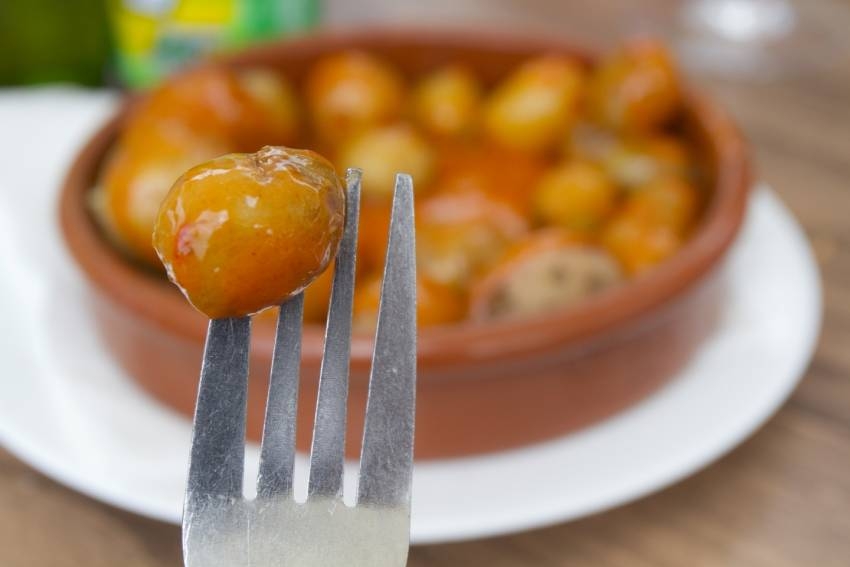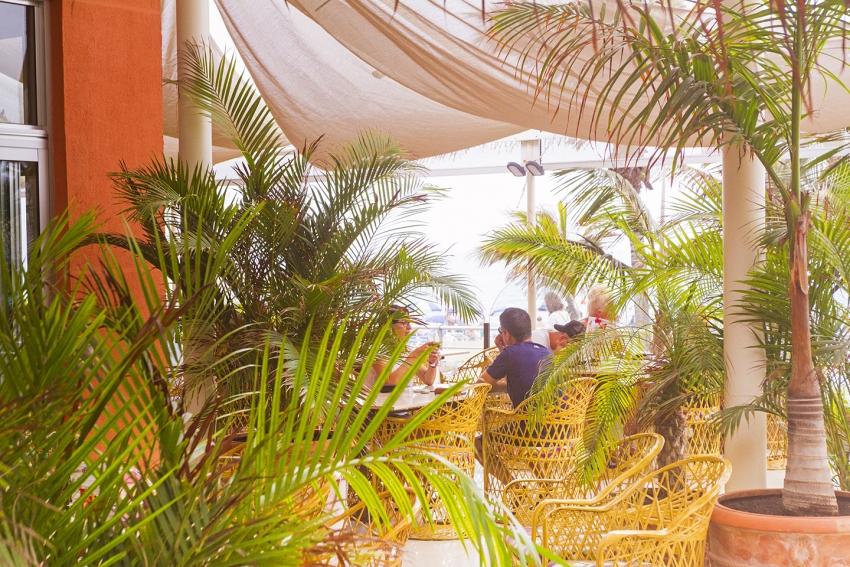The real meaning of a tapa
Going out for tapas in Gran Canaria's tourist resorts means ordering a range of small dishes that arrive higgledy-piggledy throughout your meal. Rather like Greek meze. While this is great fun, it's a long way from the Spanish idea of tapeo.
An authentic tapa is a small, often free, snack that comes with a drink. The word comes from the Spanish word for a lid; a tapa is a portion small enough to fit on a dish lid.
How to eat tapas the Spanish way
The Spanish don't stay in one bar or restaurant and order lots of drinks and tapas. Instead, they roam between bars and order one drink and one tapa in each spot. Many people eat them standing up because the Spanish love crowded places full of atmosphere.
Les says: To a Spaniard, there's nothing sadder than a quiet little restaurant.
To get this authentic tapas experience, head to Las Palmas to Vegueta or the Mercado del Puerto (one of Spain's Top Ten foodie markets) on Thursdays. You get a small beer or wine and a tapa from two euros and each bar and restaurant offers different ones.
For a more sedate tapas experience try one of these excellent Las Palmas tapas bars.
In Gran Canaria, it's an enyesque not a tapa
Most local restaurants and bars serve snack-sized portions of their dishes at the bar. However, many Canarians still use the word enyesque to describe them rather than the Spanish word tapa. And Canarians go "de enyesque" rather than "de tapeo".
Canarians like to snack but prefer to feast
If there's a national hobby in the Canary Islands, it's eating. Canar¡ans love sitting down with family or friends and eating superhuman amounts of food for a whole afternoon. They do it at picnic spots, in restaurants and even on the roadside. Walk around any Gran Canaria town or village on a Sunday and you'll find groups of Canarians eating in garages and on their roof terraces. They have enyesques, but only as a prelude to the main dishes.
Alex says: You've never been full unless you've been to a Canarian feast and matched your hosts mouthful for mouthful.
Where to try enyesques
Look out for local bars with hot food on display, or food stalls at local events and markets.
If you're by the sea, go for fish and fish and seafood dishes. Up in the hills, choose the goat. The cheese is good everywhere.
Papas con mojo is the most common enyesque although you only get one colour of mojo (almost always red) in an authentic Canarian bar.
Alex says: For posh Canarian snacks, try De Enyesque just by Las Canteras beach.














